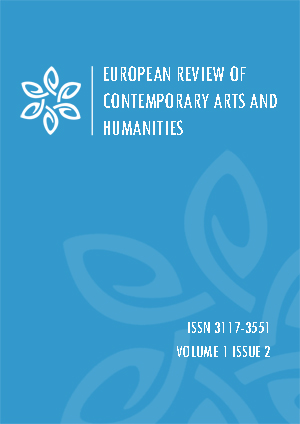THE ROLE OF UZBEK MUSICAL INSTRUMENTS IN PEDAGOGY, PERFORMANCE, AND CULTURAL IDENTITY
Keywords:
Uzbek musical instruments, pedagogy, maqom performance, cultural identity, intangible heritage, traditional musicAbstract
This article explores the multifaceted role of Uzbek musical instruments in pedagogy, performance, and cultural identity. It examines how traditional instruments such as the dutar, tanbur, doira, and karnay serve as vehicles for the transmission of knowledge, values, and artistic practices across generations. Through formal conservatory education and informal apprenticeship traditions, these instruments function as pedagogical tools that shape technical skill, aesthetic sensibility, and cultural consciousness. In performance contexts, they play essential roles in both intimate and communal settings, from maqom recitals to festive ceremonies, acting as carriers of symbolism and mediators of collective experience. The study highlights how Uzbek musical instruments contribute to the construction and reinforcement of cultural identity, serving as emblems of national heritage and instruments of cultural diplomacy in the global arena. It also addresses contemporary challenges, including globalization and declining craftsmanship, while emphasizing the adaptability and enduring significance of these instruments. By situating Uzbek musical instruments within the intersection of education, performance, and identity, the article underscores their vital importance to the preservation and evolution of Uzbekistan’s intangible cultural heritage.
References
Khurshidzhan, H. (2023). MUSICAL PEDAGOGICAL SKILLS OF A TEACHER OF MUSIC CULTURE. INTERNATIONAL JOURNAL OF SOCIAL SCIENCE & INTERDISCIPLINARY RESEARCH ISSN: 2277-3630 Impact factor: 8.036, 12(09), 98-107.
Iskandarov, Z. S., & kizi Shokirkhujayeva, U. Z. (2025). Tent-frame structure for drying agricultural products. Academic Journal of Science, Technology and Education, 1(2), 42-45.
ugli Ibragimov, U. N., & qizi Muzropova, F. I. (2025). Formation of cartographic competence of future geography teachers. Academic Journal of Science, Technology and Education, 1(2), 25-29.
Kabdurakhmanova, L. (2024). Music education in Uzbekistan. European Journal of Arts, (2), 44-47.
qizi Azamova, N. Z. (2025). Semantic and paradigmatic relations in disease nomenclature. Academic Journal of Science, Technology and Education, 1(2), 39-41.
ugli Mamasaidov, L. P. (2025). From the history of the public education system in Uzbekistan in the years of independence. Academic Journal of Science, Technology and Education, 1(2), 30-34.
Turdiqulov, M. X. (2025). The influence of popular culture on man. Academic Journal of Science, Technology and Education, 1(2), 55-57.
Karimova, D. (2025). MUSICAL PEDAGOGICAL SKILLS AND ITS PLACE IN EDUCATIONAL INSTITUTIONS. Инновационные исследования в науке, 4(4), 5-11.
Turaev, M. M. (2025). Digital Technologies in Gymnastics Teaching: The Future is Near. Academic Journal of Science, Technology and Education, 1(3), 3-6.
Ataeva, R. R. (2025). Integration of independent and classroom work in Russian language in higher military educational institutions. Academic Journal of Science, Technology and Education, 1(3), 27-29.
Xayrullo o‘g‘li, U. B., Khudoyberdiyev, B. S., & Xolmirzayev, M. M. (2025). The didactic potential of laboratory experiments in developing functional literacy. Academic Journal of Science, Technology and Education, 1(2), 50-54.
Makhkamova, S. R. Teaching Musical Education Lessons in the Pedagogical Universities.
kizi Abdumutalova, M. A. (2025). Psychological aspects of divorce. Academic Journal of Science, Technology and Education, 1(2), 58-61.
Adashbekovna, T. M. (2024). FOLK INSTRUMENTS IN EDUCATION AND METHODS OF TEACHING THEM. Web of Technology: Multidimensional Research Journal, 2(12), 280-283.
Siregar, B. M. (2025). Simulation-based optimization of mechanical system reliability under variable load conditions. Technical Science Integrated Research, 1(1), 15-18.
Munshi, A. (2025). Adaptive control mechanisms for intelligent manufacturing systems. Technical Science Integrated Research, 1(1), 3-6.


